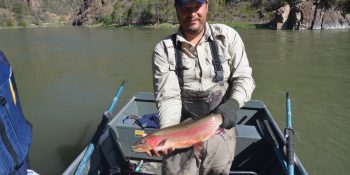The Colorado Department of Public Health and Environment is reporting that the state laboratory has a positive test result for COVID-19 today. The case presented itself in a male in his 30s, who had contact with a known case of COVID-19. Because the testing was done at the state level, the case is a “presumptive positive” and results will be sent to the Centers for Disease Control and Prevention for confirmation. To act as swiftly as possible, the state will proceed as if the case is officially confirmed.
The individual is recovering in isolation in the Denver metro area and will remain isolated until cleared by public health officials. The department is working with the local public health agencies to identify any close contacts who may have been exposed while the person was infectious. Public health practitioners will attempt to contact anyone who may have been exposed and monitor them for signs and symptoms of COVID-19.
“We are hopeful that the patient will have a swift recovery,” said Jill Hunsaker Ryan, executive director, Colorado Department of Public Health and Environment. “Like other states, we expected to begin seeing cases in Colorado and that is why we have been preparing for the past couple of months, in conjunction with local public health agencies and healthcare partners. Our goals are to protect the public from the disease, get people the care they need, and minimize disruption to daily lives.”
The department continues to work closely with CDC and public health agencies across the state and is committed to protecting the health and safety of Coloradans. Health officials advise Coloradans to stay informed, take simple disease prevention measures, and prepare.
- Practice good hygiene. Thoroughly wash your hands with soap and water. In the absence of soap and water, use hand-sanitizer; use your elbow or sleeve to cover coughs and sneezes
- Stay home if you’re sick; keep your children home if they are sick. The illness can last for many days so make preparations now to work from home if possible.
- We advise Coloradans to always be prepared for an emergency– like a large snowstorm– and have a plan for your family. Make sure to have 72 hours of key supplies on hand like medications, infant formula, diapers, pet food, etc. FEMA guidance for pre-pandemic COVID-19 preparedness is available on Ready.gov.
- Stay informed with reliable, up-to-date information. People who have general questions about coronavirus disease 2019, can call CO HELP at 303-389-1687 or 1-877-462-2911 or email , for answers in English and Spanish (Español), Mandarin (普通话), and more.
The state will provide timely updates on any additional cases that test positive at the state lab.
SPREAD THE NEWS
COMMENT, Like, Follow & SHARE @I70Scout
CURRENT EDITION
WEATHER & TRAFFIC PUZZLES RECENT NEWS ADVERTISE WITH US


















